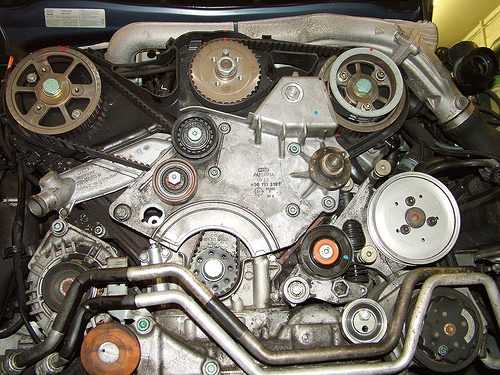
Because of a lack of proper knowledge about oxygen sensors, many car owners don't know how they are tested and end up getting them replaced, even when their oxygen sensor is in good condition. In fact, an oxygen sensor typically lasts for over 50,000 miles, and if the engine is well maintained, it may even last the entire life of the car.
The oxygen sensor is a device in the fuel control computer of your car that measures whether the engine is too rich or too lean. Every time the engine of your car is hot, the oxygen sensor activates. However, the fuel control computer can only use this information in the closed loop mode. This is the operating mode where the oxygen sensor and all the other engine control sensors are used for maximum efficiency. Maximum efficiency here refers to the best fuel economy, lowest emissions and good power.
An oxygen sensor is a chemical voltage generator that constantly compares the oxygen levels inside the exhaust manifolds and the air outside the engine. The less the oxygen inside the exhaust manifolds, the greater the voltage that will be generated by the oxygen sensor. The range of its output is between zero and 1.1 volts, and the specific voltage level at any given point of time reflects whether the fuel level is too rich in the engine or it is running lean.
The process works in a very simple way. When the engine has more fuel than it needs, it consumes all the available oxygen in the cylinder. As a result, the gasses emitted through the exhaust manifold contain no or very little oxygen. This reflects on the oxygen sensor as a voltage level greater than 0.45 volts. On the other hand, when the engine is running lean, all the fuel is burned, and the extra oxygen escapes from the cylinder into the exhaust manifold. This reflects on the oxygen sensor as a voltage level less than 0.45 volts.
There are several possible causes of oxygen sensor damage. For one, when a silicone gasket cleaner not labeled 'sensor safe' is used in an area connected to the crankcase, it will end up ruining the oxygen sensor. Also, if your car has been running rich for a long period of time, it may destroy the sensor. Using leaded fuel is another common cause of rapid oxygen sensor damage. Finally, if the outside surface of the sensor comes into contact with undercoating, antifreeze or oil, it may get ruined.
The most obvious sign of a failed oxygen sensor is a slow response time of the engine and a loss of power. Also, If the fuel economy of the car has fallen drastically, and it doesn't improve after the regular tune up, it is possible that the oxygen sensor has failed. A failure 'code' may also have been set by the on board computer. If a code pertaining to the oxygen sensor has been set by the computer, you will need to test the sensor and its wiring.
Usually it is. It is not harmful to measure the output voltage of the sensor, but be careful not to apply any voltage to it. This is what can damage it. Using a cheap voltmeter will not cause any damage, but it will not be accurate either.